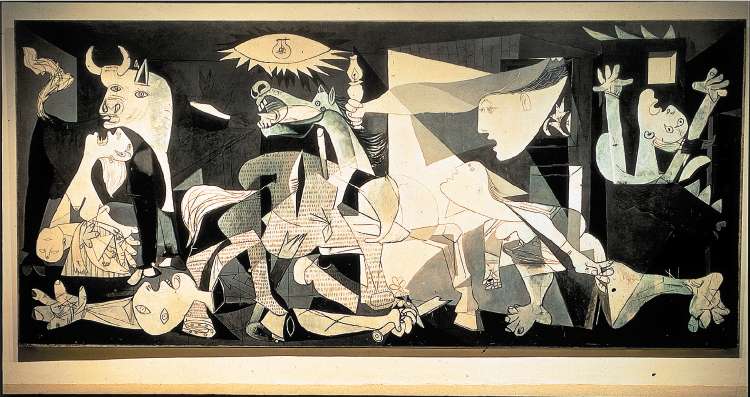Museum redesign sheds new light on Picasso masterpiece

Picasso's anti-war masterpiece Guernica, the jewel in the crown of Madrid's Reina Sofia Museum, has been given a flattering new look by the city's principal gallery of Spanish modern art.
The museum has replaced yellow spotlights with a pale diffused light as near as possible to natural daylight, making the canvas's monochrome tones appear fresher and warmer. The new setting enables viewers to appreciate a range of greys and whites formerly obscured by dazzling glare.
The walls surrounding the work have been cleared of sketches made while the artist was working on Guernica. These have been hung in adjoining rooms, enabling the huge canvas to dominate a clear space. The gallery has been reconfigured, and walls dismantled, so you can approach the painting head on from afar, instead of scuttling in sideways as before. Further opening up of the space is planned to display the painting as if it were the screen of a cinema.
"Guernica was created to be seen full-on, and not approached from the side," said the museum's director, Manuel Borja-Villel, when presenting the new arrangement this week. "We've achieved the change not by moving the painting, but by turning the museum round."
Viewing Guernica was always a hectic business, with bustling crowds and competing pictures distracting the eye, but it is now a calmer experience. You can even contemplate, without being hurried along a corridor, creases and cracks in the canvas and paintwork that testify to the painting's turbulent history. "You can appreciate the rich subtleties, the variations of tones and textures that were almost imperceptible before," said Mr Borja-Villel.
The reform recreates the open space and natural light of the Spanish pavilion at the Paris Universal Exhibition of 1937, for which Picasso created the work. It was a cry of protest at the Nazis' bombardment of the Basque town that April during Spain's Civil War. Picasso conceived his work as a giant propaganda poster, and argued that "painting does not exist to decorate sitting rooms. It's an instrument of offensive and defensive war against the enemy", said Mr Borja-Villel. The museum's rethink is timely. Guernica apart, the Reina Sofia's artworks are often said to be overshadowed by the spectacular collections of the Prado and Thyssen-Bornemisza museums nearby. This despite Jean Nouvel's flashy 2005 extension.
Mr Borja-Villel, who took over as the Reina Sofia's director last December, is aware of the competition: the new display gives Guernica the same prominence "that the Prado gives to Velazquez's Las Meninas", he says, for example, commanding the far end of the museum's finest gallery.
Guernica travelled to New York's Museum of Modern Art after its inauguration in Paris, then criss-crossed the world suffering damage with each journey before it returned to Spain in 1981 amid national rejoicing.
Picasso did not want his finest painting on Spanish soil until after the dictator Franco's death, when he hoped it would enter the Prado. "That was because the Reina Sofia didn't exist then," Mr Borja-Villel insisted this week. "He would have wanted his work to be here."
Join our commenting forum
Join thought-provoking conversations, follow other Independent readers and see their replies
Comments
Bookmark popover
Removed from bookmarks